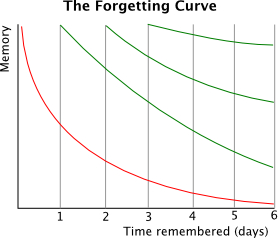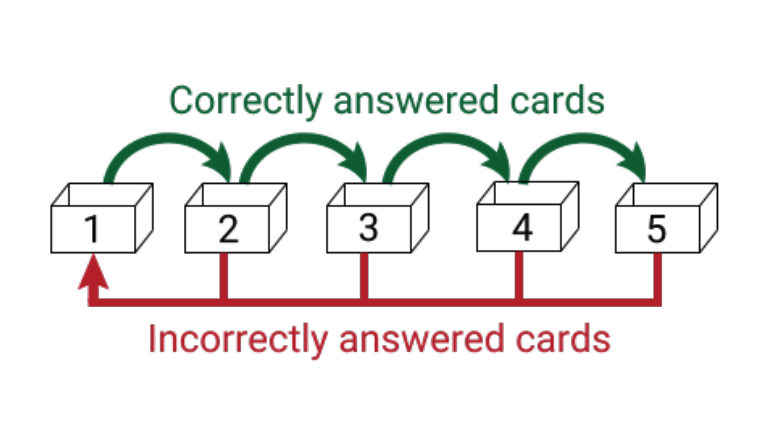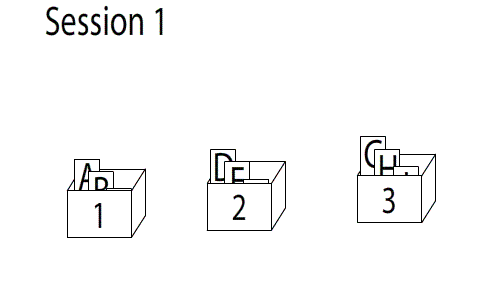What exactly is spaced repetition?
Spaced repetition is a technique for reviewing content periodically. The intervals are close together at the start of the learning process. The times become progressively longer as the information is studied. An excellent spaced repetition technique allows you to review content before it is forgotten, helping you retain it in your long-term memory.
Learning a language’s vocabulary or grammar rules
For studies where you must memorise a lot of new information, such as learning a language’s vocabulary or grammar rules, spaced repetition is very helpful.
Paper-based and computer-based SRSs are the two main types. Select your SRS and become familiar with it. Then, evaluate how much time you have available by looking at your daily schedule.

The Story of the Spaced Repetition System
Perhaps the first modern incarnation of SRS is the Leitner developed by Sebastian Leitner in the 1970s.
In this system, flashcards are sorted into groups (boxes) according to how well you know each one.
How SRS works?
All cards start in the first box, which you will review each day. As you review each card, if you succeed in recalling the word and its meaning, you place it in the next box, which contains cards you review less frequently, say every 3 days.

If you fail at recalling that word, you put it back in the original box. When you review the second box, you apply the same principle. Known cards get moved to a third box and reviewed less frequently, say every week.
Unknown cards go back to the first box. This way, cards you know better get reviewed less often and cards you know less well get reviewed more often. If you set the intervals correctly, you will see a word just as you are about to forget it.

These days, there are many digital SRS systems which allow you to avoid the trouble of managing paper flashcards and boxes.
Software for spaced repetition
Computer and smartphone applications might be useful for creating digital flashcard sets. One benefit is that the software can handle the spacing intervals for each flashcard, giving you the facts you need to learn and review each day.
The most popular is probably a free tool for computer, web, and phone. Instead of placing cards in boxes, Anki prompts you to rate how difficult or easy the card is after reviewing it and uses this feedback to reschedule exposure to each card.
With Anki, you can create your own cards or you can use cards that other users have already created (you can volunteer your cards for public use as well). Anki is a great place to find lists of vocabulary to get started. Another useful feature is the ability to include images and even audio with your flashcards. Anki is great, but it can be geeky and the learning curve
involved in using it to the fullest is steep.
Alternatives include Quizlet (free), or Memrise (free).
How can I learn Italian with a Spaced Repetition System (SRS)?
Instead of getting new vocabulary, you can use it to make natural connections between words. You can practice and learn phrases, collocations, phrasal words, and idiomatic expressions so that you can incorporate them into your speech naturally and effortlessly!
Of course, you can still use spaced repetition to broaden your vocabulary. Building your Italian vocabulary is a lifelong process.
There are only two considerations when using spaced repetition to learn new words. First, never translate into your language; instead, describe the new word using other Italian words or the picture describing it. Second, always learn new terms within their context!
Getting Started with SRS for Italian Learning:
- Choose the Right SRS Platform:
- Several apps and platforms are tailored for language learning with SRS. Select one that aligns with your preferences and goals.
- Build a Solid Foundation:
- Start by creating a strong foundation with basic Italian vocabulary and phrases. Begin with common words, greetings, and essential grammar rules.
- Create Customized Flashcards:
- Craft personalized flashcards with Italian words or phrases on one side and their Italian definition on the other. Be specific and include context to aid comprehension.
- Set Realistic Goals:
- Establish achievable daily or weekly goals. Consistency is key with SRS, so aim for regular, shorter study sessions rather than sporadic, lengthy ones.
Maximizing SRS Effectiveness:
- Use Multimedia Content:
- Incorporate images, audio, or even sentences in context on your flashcards. Engaging multiple senses reinforces memory recall.
- Review Regularly:
- Stick to your SRS schedule. Regular reviews help solidify your knowledge and prevent forgetting.
- Adjust Intervals Based on Proficiency:
- As you progress, adjust the intervals between repetitions. Topics you find challenging may require more frequent reviews.
SRS and Real-Life Application:
- Apply What You Learn:
- Take your new knowledge into the real world. Speak Italian whenever possible, whether in daily conversations or by joining language exchange meetups.
- Immerse Yourself:
- Watch Italian movies, listen to music, or follow Italian social media accounts. Immersion reinforces what you’ve learned through SRS in authentic contexts.
Celebrating Progress:
- Track Your Achievements:
- Monitor your progress. Celebrate milestones, and use them as motivation to keep advancing in your Italian language journey.
- Share with Fellow Learners:
- Connect with other Italian learners. Share your favourite flashcards, exchange tips, and celebrate successes together.
Adding a Spaced Repetition System to your Italian language learning practice is a game changer. Adopting the power of spaced repetition can help you master Italian vocabulary and phrases more efficiently while also enjoying the process.

What’s next?
You might want to keep learning Italian online with these free resources:









Leave a Reply